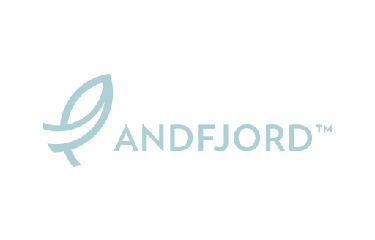Six years after founding Norway-based Andfjord Salmon, Roy Bernt Pettersen is about to see his vision for a unique, sustainable, flow-through salmon farming operation become a reality.
Located on Andøya, the northernmost island in the Arctic Archipelago of Lofoten, Vesterålen, Andfjord Salmon has been granted a concession by the Norwegian government to farm 10,000 metric tons (MT) of farmed salmon. The company’s “next-generation” patented concept, developed by Pettersen and a team of leading experts in the salmon industry, involves the installation of large pools below sea level, in quarries adjacent to the sea approximately 300 kilometers inside the Arctic Circle.
“The vision is to build a future-oriented facility, which stands for sustainable development of the aquaculture industry. Our most important advantage is the pure seawater, which will enable us to supply the high-quality salmon that the market demands,” Pettersen told SeafoodSource.
The company expects an initial annual salmon output of around 1,000 MT maximum allowable biomass (MAB), with a fish target weight of four kilos. It has a license for a MAB of 10,000 MT of salmon per year at its first site, which will give a production volume of approximately 12,500 MT of fish.
“Andfjord Salmon has acquired land in the area to allow the company to build three production facilities, and the next phase expansion will enable a total maximum allowable biomass of 70,000 MT of fish,” Pettersen said.
Preparation for the company’s initial site has been ongoing since mid-2019, with onsite assembly of the first pool starting in early April following transportation of component panels by sea and road. The site is expected to be ready to receive fish in late summer of 2020.
The pools are developed by HighComp AS, which won the NOK 100 million (USD 9.5 million) contract to design, engineer, manufacture, and install the first pool, which will measure 45 meters long by 40 meters wide, and will be 20 meters deep, with a volume of 30,000 cubic meters.
Once installed, large volumes of nutrient-rich sea water from an adjacent fjord will be pumped into the secure pools. The water inlets, at depths of 30 meters to 160 meters, give optimal temperatures of 7 or 12 degrees Celsius, depending on the time of year. According to Pettersen, the entire volume of water will be exchanged at least 15 to 17 times per day, to create ideal growing conditions for the salmon.
A major benefit of taking water from such a depth, Pettersen explained, is that the water is below the level at which sea lice thrive, so they are unlikely to be transferred into the production system. Seasonal algal blooms, which proliferate near the surface of the ocean and are the cause of mass fish kills through suffocation, will also be avoided.
“As well as the biological benefits, growing salmon in onshore pools prevents escapes, which helps to reduce one of the anxieties about fish farming. The contained environment also means that we can closely monitor every aspect of the production cycle,” Pettersen said.
For those concerned by the costs of pumping water, Pettersen noted that by siting the fish tanks below sea level, the lifting height of the incoming water is reduced, which greatly reduces energy consumption. Solar panels and wind turbines are incorporated into the project to make the plant self-sufficient in energy.
“We have designed the system to incorporate beneficial aspects of both floating and land-based farms, and I believe that the new concept will enable us to reduce feed costs, optimize salmon welfare and ensure sustainable production,” Pettersen said.
All bio-waste will be collected and recorded, with bio-residues sent to a local company, which will utilize its nutrients, such as nitrate and phosphorus, in peat products.
The project will make use of many high-tech features as well. For example, Mørenot Robotics is producing and installing electric work rafts and ROVs to be used daily for cleaning and inspecting the base and walls of the first tank.
“A robust inspection and cleaning regime is very important to us. Continuous cleaning of the tank surfaces and the removal of particles prevent the formation of sediments, biofilms, and the propagation of potentially pathogenic microorganisms and this is essential for good fish welfare,” Andfjord Salmon Director of Fish Health Christine Thomassen said.
With progress moving ahead at a fast pace, a crop of new hires has been put into place at the company. The latest new face is Martin Rasmussen, 34, who took over for Pettersen as CEO on 1 April, 2020. Pettersen will move to focus on his chairman’s role, R&D, and facilitation and regulation for the next phase of the project.
Rasmussen, who previously managed a facility for Norway Seafood and served as general manager of Primex Norway, was already an active board member of Andfjord Salmon before being tapped to be CEO. After a busy month at the helm, Rasmussen said he was excited by the prospect of tackling any future challenges that may arise.
“My first task is to oversee the proof of concept of this project. Andfjord has a very good plan in place, but that needs to be delivered. I know what it means to be faced with unforeseen events, but when tackling new challenges, we need to be creative and solution-oriented,” Rasmussen said. “We have recently brought a lot of experienced and highly competent people onboard to build the organization, and everyone is doing what they are best at. Our strict focus is on the core task, which is to build and commission the first pool. We aim to prove that the Andfjord concept is as exceptional as we all believe it to be."







